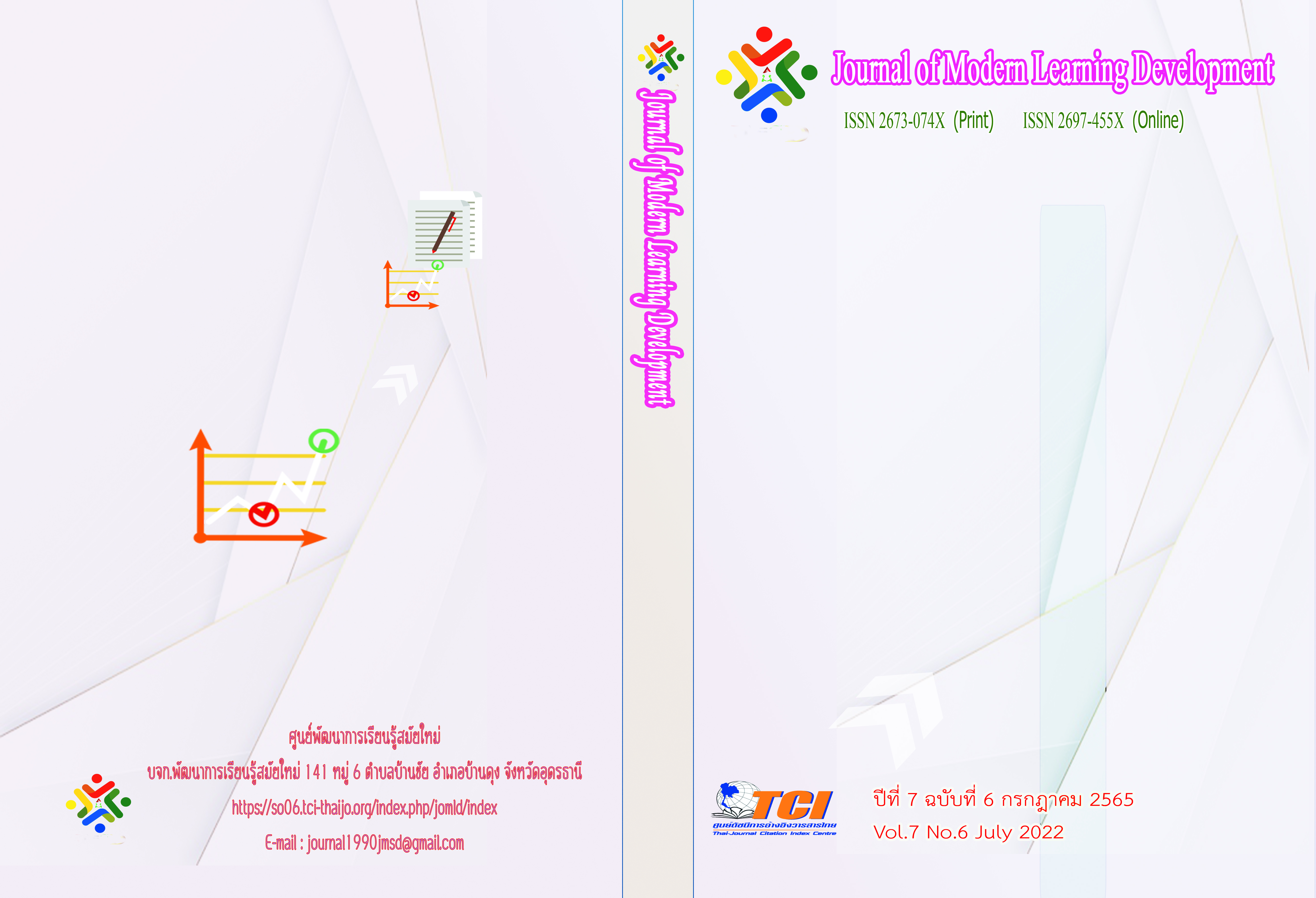A Study on the Tourist Satisfaction of Rural Tourism Destination Based on Structural Equation Model
Main Article Content
Abstract
This paper mainly studies the impact of perceived quality on tourist satisfaction in rural tourism destinations. Perceived quality and perceived value perspective, and from the visitors to Guangxi Ming Shi rural scenic area as an example, on the basis of literature analysis to participate in the Ming Shi rural scenic spot after the rural tourism of the questionnaire survey to 642 visitors to build rural tourism destination tourist satisfaction hypothesis model, using the structural equation model analysis to test the model.
This study found that: (1) The perceived quality of tourists in rural tourism has a significant positive impact on the perceived value of tourists; (2) The basic reception quality and support system quality of tourists' perceived quality have a significant positive impact on satisfaction, while characteristics experience quality has no effect on satisfaction; (3) The emotional value and functional value of tourists' perceived value have a significant positive impact on tourist satisfaction, while social value has no effect on tourist satisfaction; (4) Tourist involvement has a significant impact on emotional. There is a significant positive moderating effect among value, functional value and tourist satisfaction. Combined with the analysis of the above research results, the article puts forward suggestions and measures to improve the satisfaction of tourists in rural tourism destinations.
Article Details
References
Anderson, E.W., Fornell, C., & Lehmann, D. R. (1994). Customer satisfaction, market share and profitability. Journal of Marketing, 56.
Babin, B. J., & Griffin, M. (1998). The nature of satisfaction: an updated examination and analysis. Journal of Business Research, 41(2), 127-136.
Baker, D. A., & Crompton, J. L. (2000). Quality, satisfaction and behavioral intentions. Annals of tourism research, 27(3), 785-804.
Bian, Xianhong. (2005). Research on the inter-relationship of Tourists Destination image, Quality, Satisfaction and Behavior intretion. East China Economic Management, (01), 84-88.
Bigné, J.et al.(2001). Tourism image, evaluation variables and after purchase behaviour: inter-relationship.Tourism Management, 6(1), 607-616.
Buhalis, D. (1998). Strategic use of information technologies in the tourism industry. Tourism Management, 19(5), 409-421.
Cao, Yanxue. (2018). A Study on the Influence of Ethnic Tourists, Experience Authenticity on Satisfaction. (Doctoral dissertation, Northwest University).
Chen, C. F., & Tsai, D. (2007). How destination image and evaluative factors affect behavioral intentions?. Tourism Management. 28(4): 1115-1122.
Choong-Ki, Lee., Yong-Ki, Lee., et al. (2004). Segmentation of festival motivation by nationality and satisfaction. Tourism Management. 25(1):61-70.
Cronin Jr, J. J., Brady, M. K., & Hult, G. T. M. (2000). Assessing the effects of quality, value, and customer satisfaction on consumer behavioral intentions in service environments. Journal of retailing, 76(2), 193-218.
Dong, Dahai., &nYang, Yi. (2008).Theoretical Analysis of Perceived Value by Consumer under internet Environment. Chinese Journal of Management, (06), 856-861.
He, Jianying. (2012). A Study on domestic tourist satisfaction of the urban tourist destinations: take Tianjin for example (Doctoral dissertation, Nankai University).
He, Qiongfeng. (2011). The Inherent mechanism and temporal-spatial feature of China’s domestic tourist satisfaction. Journal of Tourism, (9), 45-52.
Huang, Yinhua., & Huang, Fucai. (2007). Tourist Perceived Value Model, Measurement and Empirical Research. Tourism Tribune (08), 42-47.
Hui, T. K., D Wan, & Ho, A. (2007). Tourists' satisfaction, recommendation and revisiting singapore. Tourism Management, 28(4), 965-975.
Ko, de, Ruyter, and, Martin, & Wetzels, et al. (1997). The dynamics of the service delivery process: a value-based approach. International Journal of Research in Marketing.
Lam, S.Y., Shankar,V., Erramilli, M. K. , & Murthy, B. (2004). Customer value, satisfaction, loyalty, and switching costs: an illustration from a business-to-business service context. Journal of the Academy of Marketing Science, 32(3), 293-311.
Lee, C. K., Yoon, Y. S., & Lee, S. K. (2007). Investigating the relationships among perceived value, satisfaction, and recommendations: the case of the korean dmz. Tourism Management, 28(1), 204-214.
Lu, Juan., Lu, Yan., & Lou, Yingchun. (2006). Service Loyalty and Its Drivers: An Empirical Study Based on banking. Managing the World, (8), 94-103.
Murphy, P., Pritchard, M. P., & Smith, B. (2000). The destination product and its impact on traveler perceptions.Tourism management, 21(1), 43-52.
Oh, & Haemoon. (2000). Diners' perceptions of quality, value, and satisfaction. Cornell Hotel & Restaurant Administration Quarterly, 41(3), 58-58.
Parasuraman, A., & Grewal, D. (2000). The impact of technology on the quality-value-loyalty chain: a research agenda. Journal of the Academy of Marketing Science, 28(1), 168-174.
Petrick, J. F. (2016). The roles of quality, value, and satisfaction in predicting cruise passengers' behavioral intentions. Journal of Travel Research, 42(4), 397-407.
Pizam, A., Neumann, Y., & Reichel, A. (1978). Dimentions of tourist satisfaction with a destination area. Annals of Tourism Research, 5(3), 314-322.
Sanchez, Callarisa, L., RM Rodríguez, & Moliner, M. A. . (2006). Perceived value of the purchase of a tourism product. Tourism Management, 27(3), 394-409.
Sheth, J.N., Newman,B.I., & Gross, B.L. (1991). Why we buy what we buy: a theory of consumption values. Journal of Business Research, 22(2), 159-170.
Song, Haiyan., & Zhu, Mingfang. (2012). Dynamic Satisfaction Evaluation Based on Visitor Satisfaction Index——Take Hong Kong. China Management Studies (01), 52-66.
Soutar, S. (2001). Consumer perceived value: the development of a multiple item scale. Journal of Retailing, 6, 1-13.
Wang, Xia., & Mei, Hu. (2006). Tourist Satisfaction in Tourist Destination: Model and Empirical Research. Journal of Beijing International Studies University (07),1-6.
Zaichkowsky, J. L. (1985). Measuring the involvement construct. Journal of Consumer Research, 12(3), 341-352.
Zeelenberg, M., & Pieters, R. (2004). Beyond valence in customer dissatisfaction: A review and new findings on behavioral responses to regret and disappointment in failed services.Journal of business Research, 57(4), 445-455.
Zhang, Xiaoyi. (2020). Research on Tourists, Perceived Quality of Rural Tourism Products. (Doctoral dissertation, Yangzhou University).


